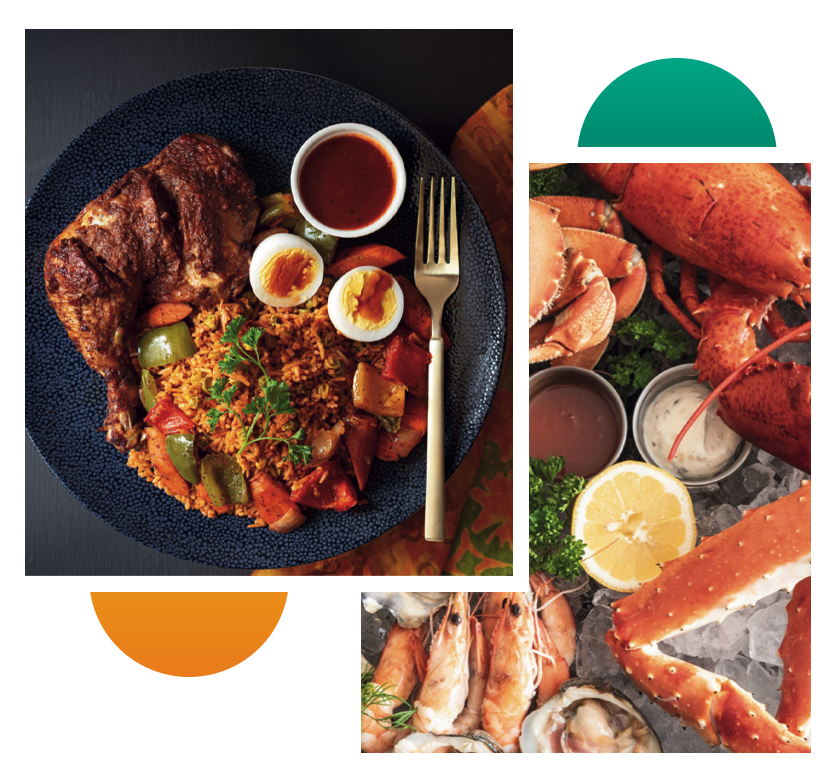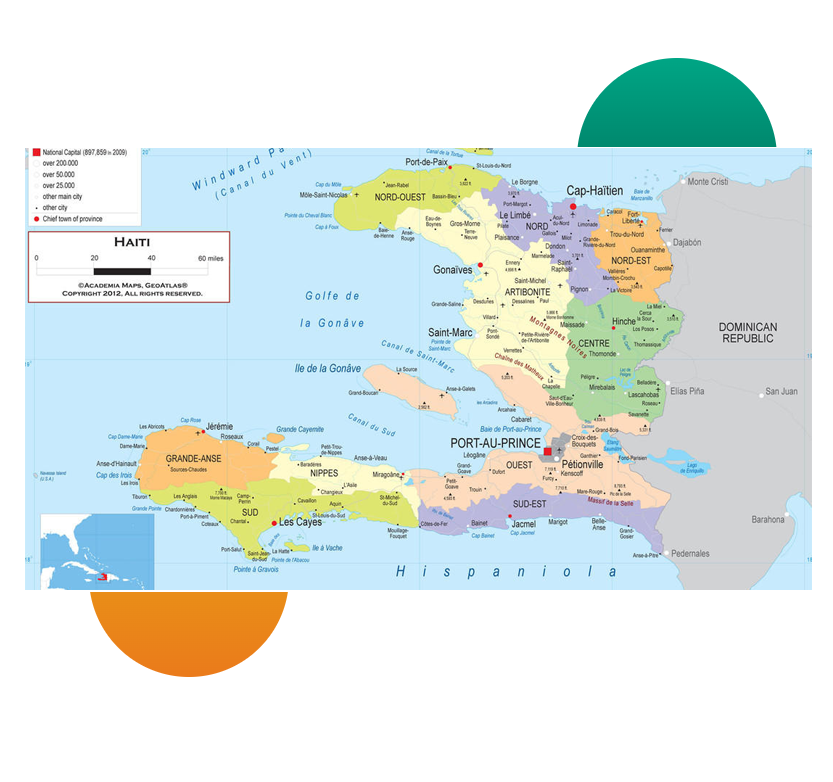C’est Si Bon! Haïtien Cuisine Cookbook

History of Haitian Cuisine
The island of Hispaniola is home to the Dominican Republic and Haiti in the Caribbean. While the cuisine of the Dominican Republic is Spanish influenced, Haiti’s fare is distinctly French and Creole, giving Haitian food a unique Flavors among all Caribbean nations. This book incorporates this delicious fare in a way never published.
Although the average Haitian’s diet consists of mostly rice, corn, beans, yams, or millet, more extravagant fare is available, particularly in Petion-Ville of the capital, Port-au-Prince, such as French cheeses, lobster, and frog legs. Tropical fruits native to the island include mango, coconut, guava, passion fruits, cerise, avocado, and pineapple. Popular beverages are made with these fresh fruits, and Juna, a local orange squash drink, is also well liked.
Haitian cuisine is different in several important ways from its regional counterparts. The main influence derives from French Creole and African cultures, with strong influence from native Taíno and Spanish culinary techniques. Although there are similarities to other cooking styles in the region, it carries characteristics known only to the country and appeals to the many visitors who frequent the island. Haitians cook using an extensive array of vegetables, meats, and spices. Peppers are often used to intensify flavor, so many dishes tend to be moderately spicy.
Rice, beans, and corn are staples in the Haitian diet, which are very filling because starches are high in carbohydrates. In rural areas, a popular dish such as mais moulu (mayi moulen), which is comparable to cornmeal, can be eaten with sauce pois (sos pwa)—a bean sauce made from one of many types of beans such as kidney, pinto, garbanzo beans, or pigeon peas. Mais moulu can be eaten with fish (often a red snapper) or alone, depending on personal preference. Tomato, oregano, cabbage, avocado, and red and green peppers are several of the many types of vegetables and fruits that are used in Haitian dishes. Banane Pésée (Bannan Pézé), flattened plantain slices that are fried in oil (known as tostones in the Dominican Republic and Puerto Rico), are eaten frequently in Haiti as both a snack food and as part of a meal. They are frequently eaten with tassot (deep- fried goat) and/or griot (deep-fried pork).
Help Us Raise Them Up
Your donation means a lot to them. Your tax-deductible donation can save lives.

History Of Haiti
Haiti: A Tradition of Solidarity.
On January 1, 1804, for the first and only time in history, a large group of slaves defeated the powerful Army of Napoleon and founded a new nation. However, the contribution of Haiti to the struggle against slavery and colonialism has just begun.
Aid to the U.S. Struggle for Independence from England
In 1773, about 1,500 mulattoes led Count Charles Henry d’Estaing went to the U.S. (Savannah, Georgia) to fight for the independence of this country. Among the volunteers was the young Henri Christophe, who became one of Haiti’s independence heroes.
Aid to Dominican Struggle against Spanish colonialism
In 1808. Alexandre Petion and Henri Christophe sent food and financial aid to Dominican patriots Juan Suanchez and Cyriaco Ramirez leading the fight against Spanish colonialism.
Aid to the South America Struggle against Spanish Colonialism.
In early 1816, Simon Bolivar came to Haiti looking for support. From President Alexandre Petion he received extensive military supplies, 1400 volunteers, a printing press, money, and food. These contributions were the most significant Bolivar ever received.
Aid to Mexico’s struggle Against Spanish Colonialism.
On October 1816, on request from Mexican General Francisco Javier Mina, volunteers were sent to fight against the Spaniards.
Aid to the Greek Struggle against Turkish Occupation.
In 1821, when Papflessas was calling for Greeks to rebel, some patriots, among them Wogorody Polichron aides and Clonares, obtained arms and volunteers from Haiti. Led by Panyottie, they landed on the island of Idhra to fight. Turkish occupies. In 1935, Princess Marina of Greece visited Haiti to express her country’s gratitude for Haiti’s contribution to the struggle against Turkish domination.
Aid to the Belgian Struggle for Independence.
In 1830, Belgian revolutionaries received the support of the Haitian government in their struggle for independence. After victory, the Belgian adopted Haiti’s national motto “In Unity There Is Strength”.

